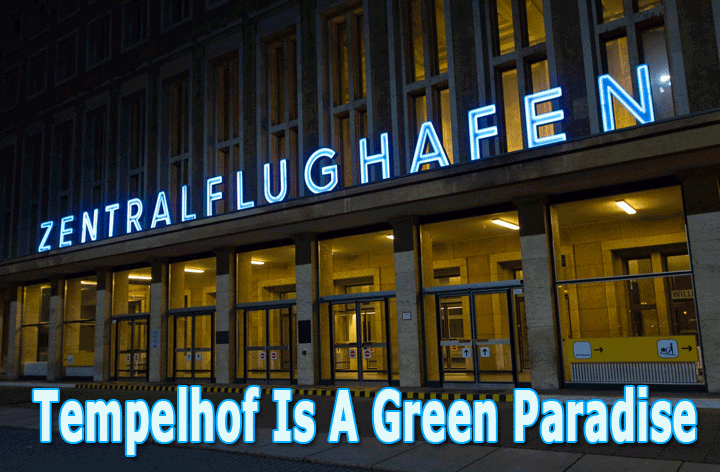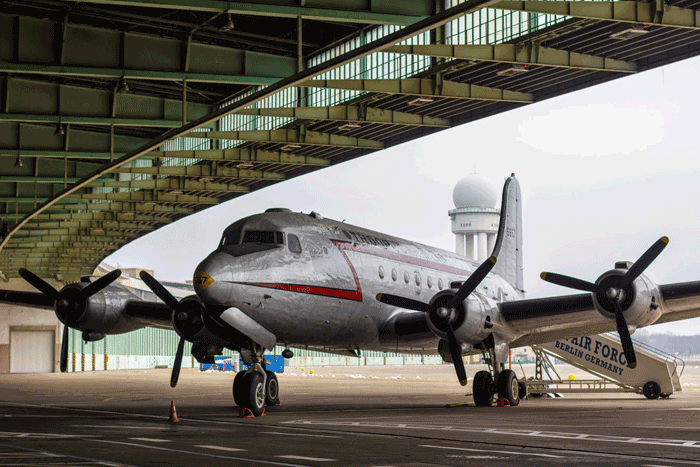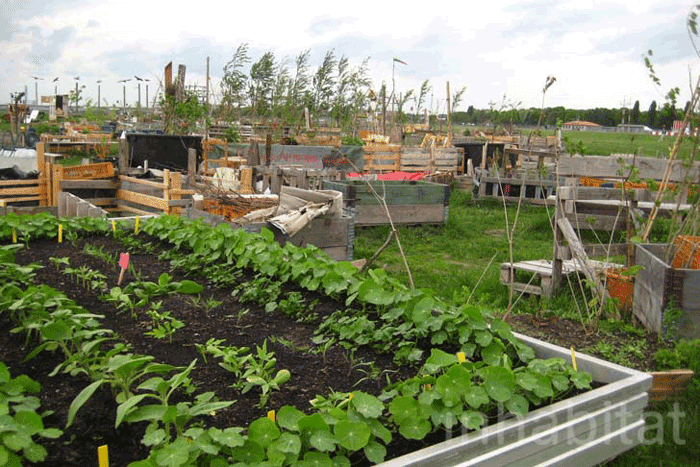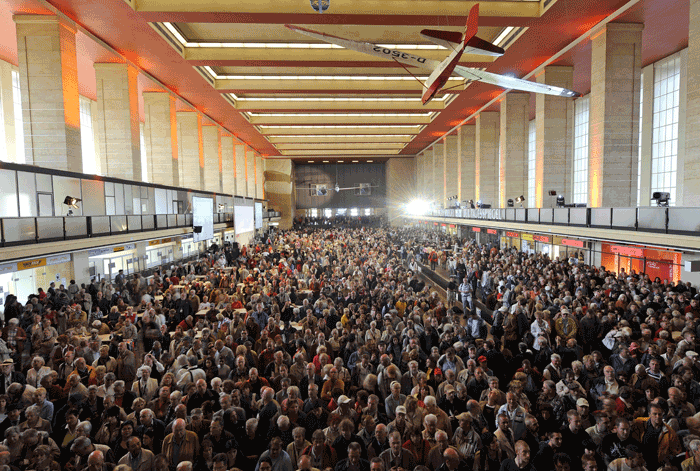
“The
airport at Tempelhof unites the characteristics of an
inland sea with the yearning for faraway places,”a
delighted observer once said.
Attendees of World Cargo Symposium
might want to get out of the hotel this week and take
a walk over to one of the best public parks in the world,
where a veritable green paradise has been crafted out
of what was once the gateway of The Berlin Airlift,
where modern air cargo was born in 1948.
Today you can actually stroll
down the main runway where cargo aircraft landed around
the clock between 1948-49. Loaded with coal and food,
these life-saving planes delivered the supplies that
spared Berlin during the Soviet blockade of the city.

THF, as the airport was known,
still beckons Berliners and visitors alike to enjoy
the old airfield’s expansive public space and
sweeping vistas in the center of the German capital
city.
Tempelhof was closed in 2008
and turned over to the public in May 2010.
Today, barbecues smoke and
bicycles careen with families, joggers, and children
at play where aircraft used to swoop in and out.
“No other city would
treat itself to such a crown jewel of open space,”
said Ingo Gräning of Tempelhof Projekt, the state
company running the site.
“There’s 300 hectares
here. The principality of Monaco has 200,” he
smiled.
Far
From Abandoned
Despite closure
as an airfield after THF was made redundant by the building
of BER, space in Tempelhof’s huge sweeping hangar
remains occupied by City of Berlin Police (the Polizei
have been here since 1951) and the radar tower is still
in use by the German Army to monitor flight traffic.
Architect Norman Foster called
Tempelhof “the mother of all airports”.
Today in addition to all else
happening there “Mom” serves as Germany’s
largest refugee center for people from Syria, Afghanistan,
Iraq and elsewhere.
The interior of the old airport
terminal is the scene for several businesses including
a kindergarten, a dancing school, and the charming “La
Vie En Rose,”a live vaudeville theater currently
featuring a daily revue titled “Fly And Dream.”
“La Vie” has been
performing at THF for nearly 40 years.
Tempelhof
Freedom
In 2011 city
planners advanced a scheme by former Berlin Mayor Klaus
Wowereit to build apartments on airport land. The plan
was shot down by a referendum that led to a citywide
vote where more than 64 percent cast their ballots telling
politicians and investors to keep their hands off Tempelhof.
The Tempelhof Conservation
Act now protects open spaces at the airfield from any
change, including removing the old airport signage and
runway markings that are looked upon today with reverence
by people who use the park. Today Tempelhof has been
branded Tempelhofer Freiheit, or Tempelhof Freedom.

Gardens
on Pallets
The Stadtteilgarten Schillerkiez
community gardens at Tempelhof are open to the public
and provide a free space to meet people, read, partake
in any number of events, and even grow vegetables.
Blooming under the Tempelhofer
Freiheit umbrella, this initiative is for people to
experience ‘the countryside without ever having
to leave the city.’
The structures within the improvised
urban oasis are built from an array of found and recycled
materials, with pallets transformed into benches and
shopping carts converted into compost bins. Benches
and raised beds organize the vast space into small allotments
where members of the gardens can grow vegetables or
simply sit back and relax.
Digging in Tempelhof’s
grounds is completely forbidden, as no one knows what
sits beneath the soil—a tip of the hat to THF’s
military past.
With the content of the soil
uncertain, members of the gardens grow their food inside
the raised, movable beds.
Looking
Ahead
Because the
people of Berlin took matters into their own hands,
Tempelhof—at least in the near term—will
remain largely as it is.
Further development is underway
with direct community involvement.
And while change is underway
at the terminal building for adaptive reuse into studios
and recording facilities and offices for start-ups,
the process is closely monitored to respect THF’s
protected status.
Today, Berliners have taken
Tempelhof into their hearts and souls.

Heart
Of The City
It only takes
20 minutes to ride on a bike from the airport to the
Brandenburg Gate and the monumental Reichstag, which
houses the German Parliament.
“From the roof of the
airport's enormous, semi-circular complex, 1,230 meters
(4,035 feet) from one end to the other, looking out
at Berlin's sea of buildings it is like THF were set
in the middle of a vast prairie; the flatlands that
postwar West Germany's first chancellor, Konrad Adenauer,
famously dubbed ‘the beginnings of the Russian
steppes,’” wrote Der Spiegel.
Whatever Tempelhof Airport
may have lost when the airplanes departed, it has gained
back with dividends as the emotional heart of one of
the great emerging capital cities of the world.
Geoffrey |





